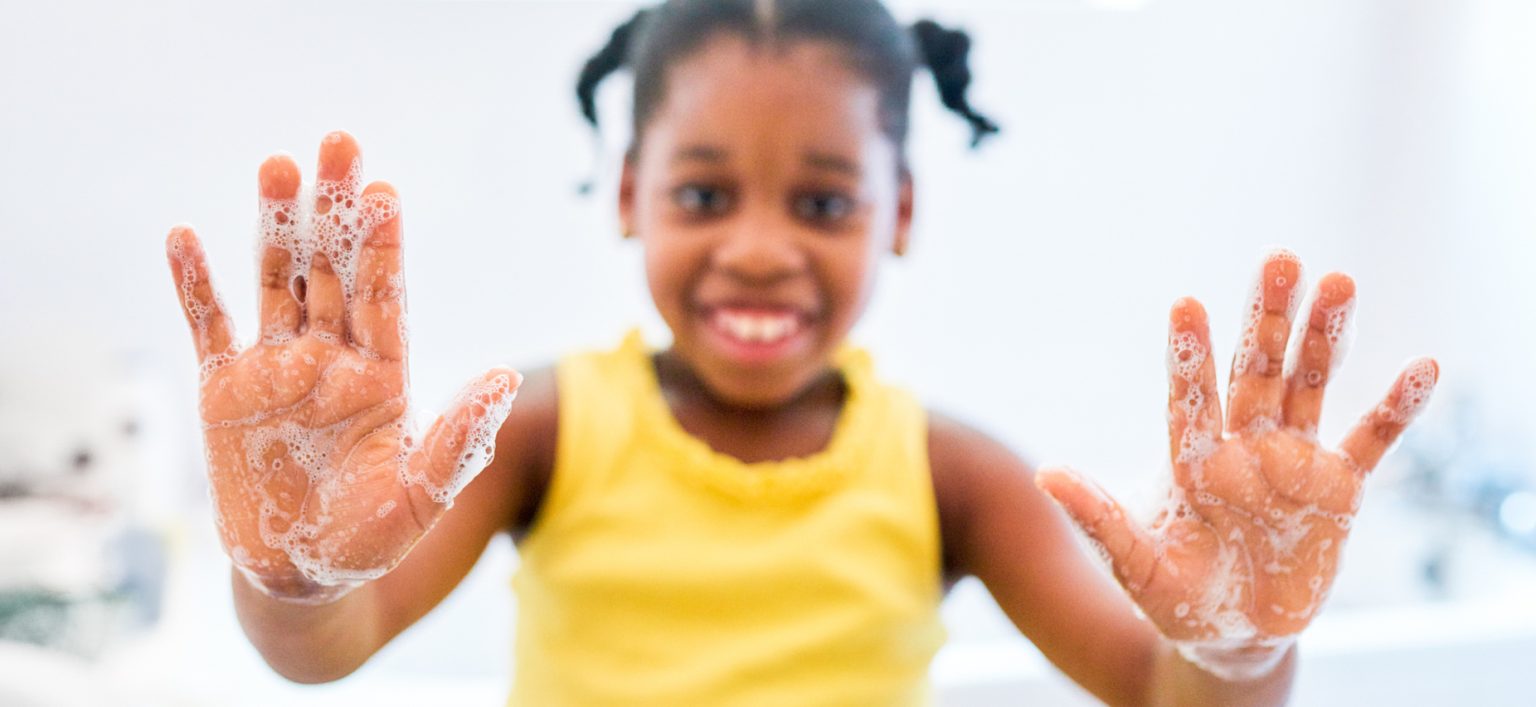You may think keeping food safe isn’t that big of a deal, yet according to the Centers for Disease Control and Prevention (CDC) food-borne illness is responsible for more than 3,000 deaths per year in the United States, and one in six Americans will get sick from food poisoning this year. Taking the proper steps to prepare and store food can minimize your risk and keep you and your family safe.
The first important step in keeping food safe is proper cleaning, which includes: handwashing, cleaning all working surfaces, and proper washing of fruits and vegetables.
Handwashing: Proper handwashing removes harmful germs and bacteria to keep them from contaminating your food. To practice proper handwashing: Start by rinsing your hands with warm or cold running water, then apply soap, scrub vigorously and be certain to wash the backs of your hands, in between your fingers, and even under your nails. Continue to wash your hands for 20 seconds or more. Then dry your hands with a clean towel or paper towel.
Quick tip: Teach your children (and yourself!) to sing “Happy Birthday” two times while washing their hands.
Throughout food preparation, there are many times you will need to wash your hands again: after cracking or working with raw egg; after touching raw meat, fish, shellfish or poultry; after using the bathroom; after blowing your nose.
Surfaces and utensils: Wash all surfaces such as counters and make sure cutting boards are washed with hot soapy water before working on them and after working on them. Even during food preparation, you need to clean the working surfaces again. For example, if you are preparing raw chicken and then making a salad, you must clean the cutting board and work surface after working with the chicken before moving onto the salad.
Taking this step will help prevent contaminating the fresh vegetables. This also goes for utensils and serving platters. In between handling raw meat, fish or shellfish, or poultry, you should clean the utensils and serving platter with warm soapy water; otherwise, if you use the utensil or platter for the cooked item, you will cross-contaminate the cooked food.
Food: All fruits and vegetables should be washed before cutting them. This also goes for fruits and vegetables whose skin or peel you don’t eat, like watermelon, cantaloupe or carrots.
Start by cutting away any bruised or damaged areas, then rinse the produce under running water. You do not need to use soap or special chemicals. Washing them will clean the surface of potentially harmful bacteria. Without washing the outside, when you cut into the vegetable or fruit you will transfer bacteria from the outside onto the part of the fruit or vegetable that you are going to consume. Plus you will contaminate the cutting board that you are working on.
Did you know? You should not rinse raw poultry, meat, eggs, shellfish or fish because rinsing it can spread harmful bacteria to countertops or work surfaces.
There are several phases of separating food that are paramount to avoid cross-contamination, including: at the grocery store, in the refrigerator, and during food preparation.
At the grocery store, keep raw eggs, meat, poultry, shellfish and fish separate from fresh ingredients like fruits and vegetables. This will help to prevent bacteria from the food or its juices from contaminating other foods.
In the refrigerator, store raw eggs, meat, poultry, shellfish and fish in bags or containers. This will stet the juices or the product from contaminating other foods. Keep eggs in their carton to contain any potential leaking if an egg should crack. Also, when possible, strategically place fresh and already cooked items on shelves above raw eggs, meat, poultry, shellfish and fish in the refrigerator.
During food preparation, when possible use a separate cutting board for working with raw meat, poultry, shellfish or fish—or carefully wash the cutting board in between preparation steps.
Cooking foods to the proper temperatures will ensure that the food reaches a temperature that will destroy harmful bacteria. The correct temperature varies from food to food. For example: All poultry needs to reach at least 165 degrees F., egg dishes need to reach at least 160 degrees F., and all pork needs to reach at least 145 degrees F. (plus a three-minute rest time before serving). For more on safe temperatures, see the USDA Food Safety Minimum Temperature chart.
Using a food thermometer is a great way to take the guesswork out of knowing if something is cooked thoroughly. This will allow you to check the internal temperature of the item and then follow the temperature chart to ensure the food is reaching the proper temperature.
After you have safely prepared and eaten the food, leftovers need to be chilled and stored properly. Any leftover food should be refrigerated within two hours; when it is 90 degrees or warmer, leftovers should be refrigerated within one hour. Chilling the food keeps it in a safe temperature zone.
The “danger zone” for food is between 40 and 140 degrees; in this range if there are harmful bacteria in a food, it will flourish and multiply. Food should not be thawed on the counter as the food will be in a temperature zone where bacteria can grow.
It’s a good practice to label and date items when you put them in the refrigerator so you can keep track of how long something has been stored. In general, leftovers can be safely stored for three to four days.
Did you know? You can freeze leftovers, but freezing food will not destroy harmful bacteria, so it is important to reheat leftovers to at least 165 degrees F. to destroy any harmful bacteria.
When you are headed to a picnic, take careful steps to safely transfer the foods. Start by using an insulated cooler filled with ice or ice packs to transport food.
Picnic Packing Tip: Use one cooler for drinks and keep a different one for food. This will help minimize the opening and closing of the food cooler and help the temperature of the food stay within a safe range.
Foods that need to be kept cold include: meat, poultry, fish or seafood; deli meat and cheese; prepared sandwiches; salads (such as macaroni or pasta salad); cut fruit and vegetables; and dairy products. Raw meat, poultry, fish and seafood must be stored in containers or bags to keep juices from getting on prepared foods.
Take the aforementioned same careful steps to prepare foods for lunches going to day camp with your children. To help keep food at a safe temperature during transit and until it is lunchtime, pack food in an insulated tote to help keep cold foods cold.
Pack food the night before and store it in the refrigerator to chill it. Add one to two ice packs to the insulated tote to help keep food cold. Place the ice packs strategically—next to yogurt, salad, or a sandwich, for instance. These simple steps will help to keep food in a safe range.
Lunch Packing Tip: Freeze yogurt tubes or milk boxes to double as an ice pack.
Wishing you and your family a safe and healthy summer!





